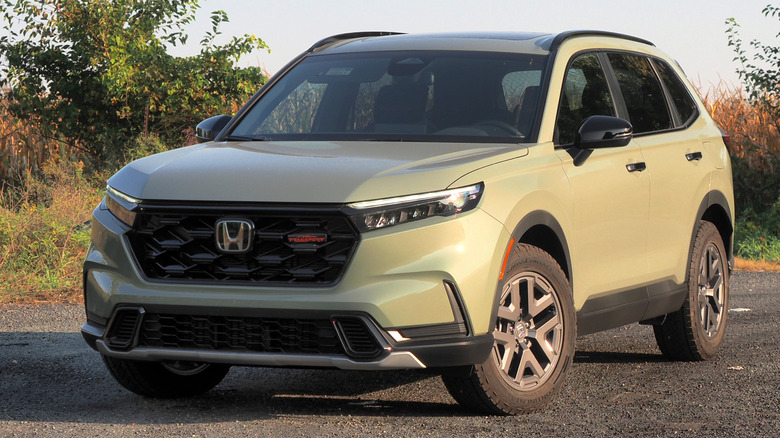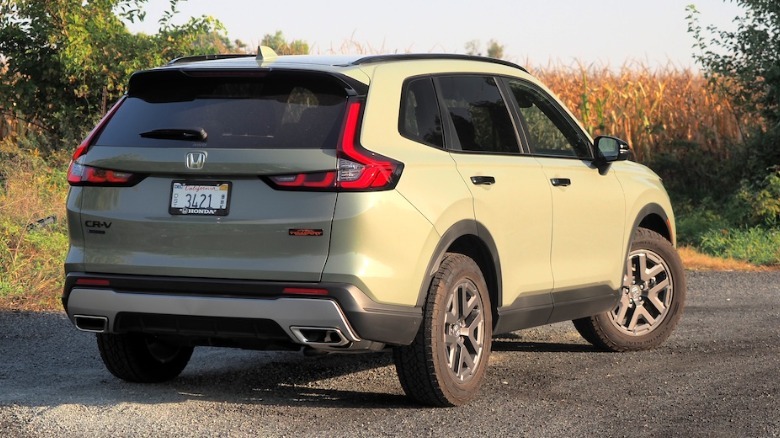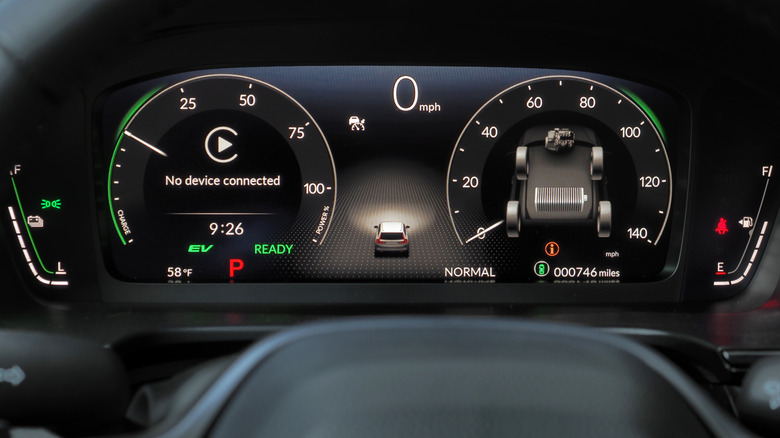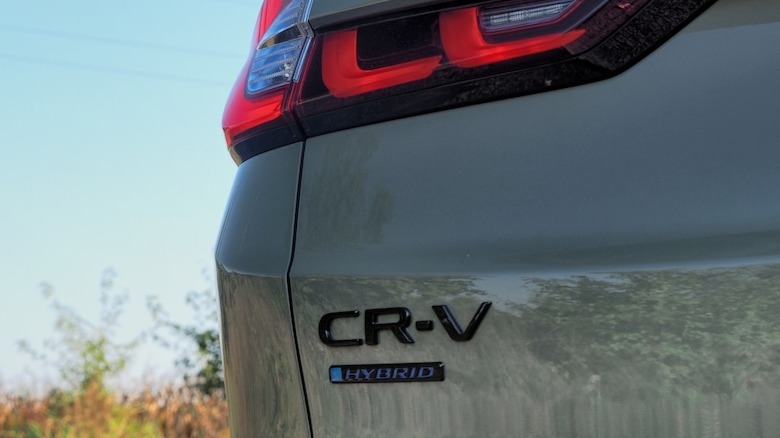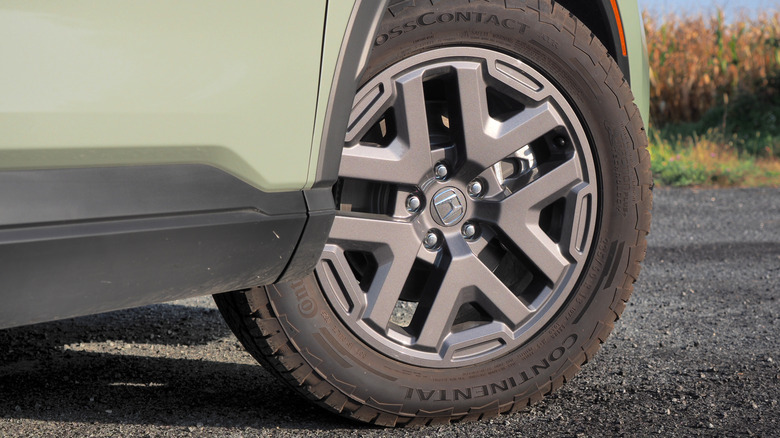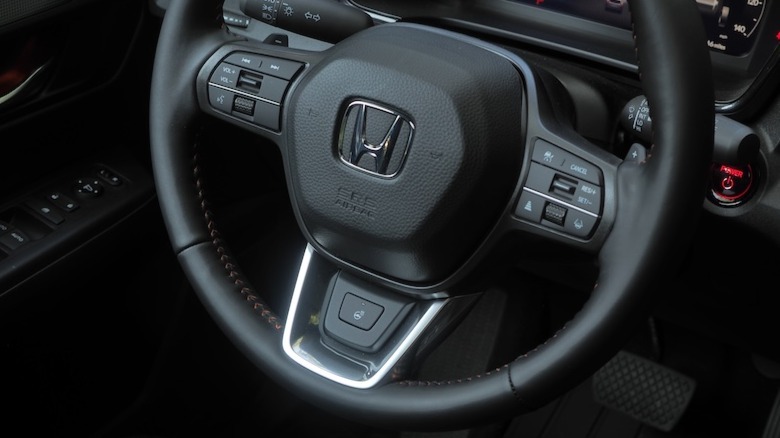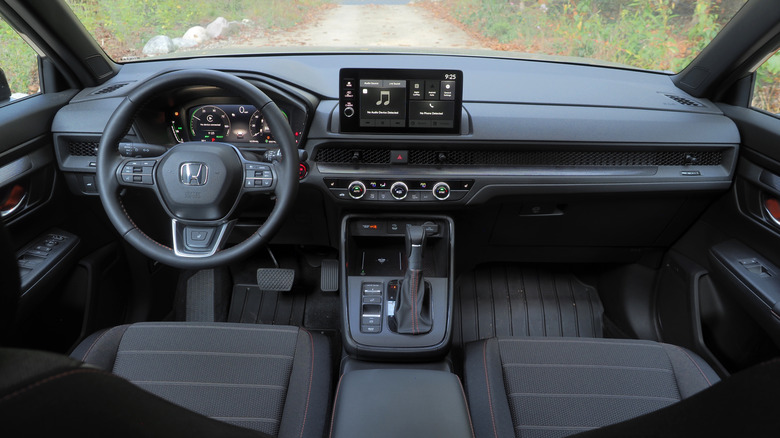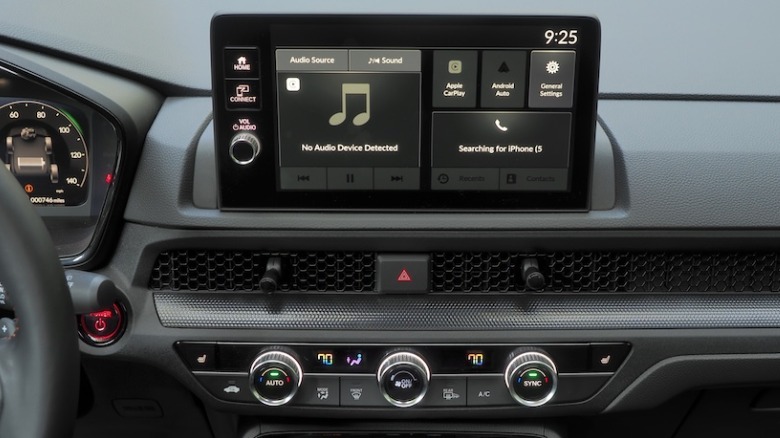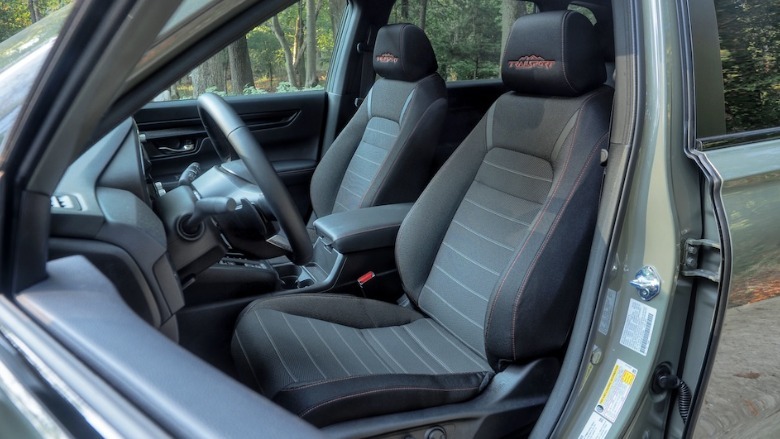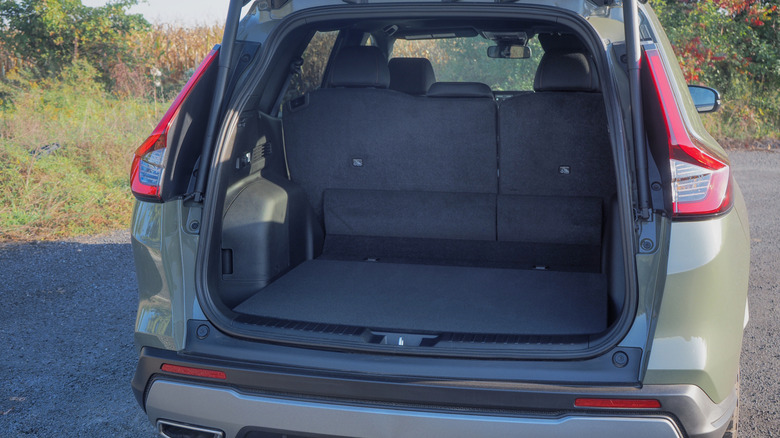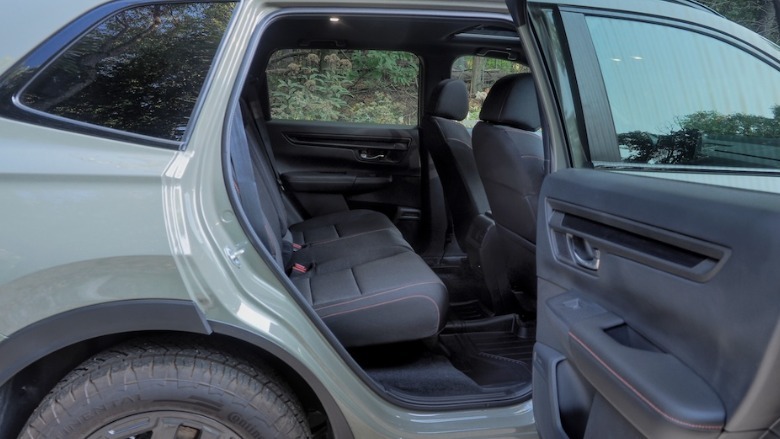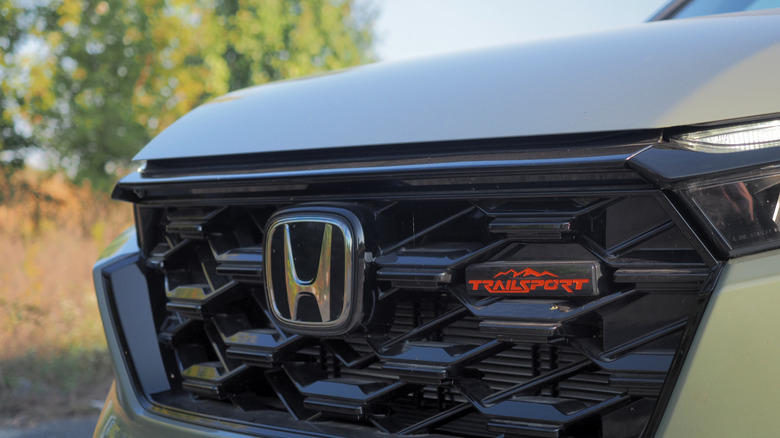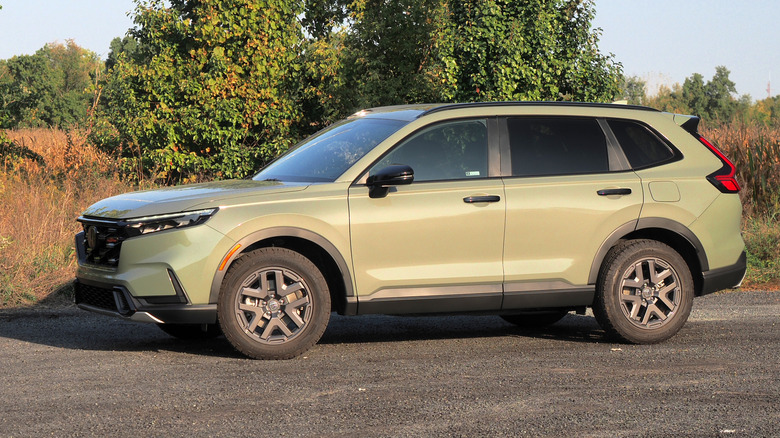Honda's CR-V TrailSport Hybrid Looks Great, But The Smart Money Buys A Different Trim
You can practically see the Venn diagram on the whiteboard in Honda's product planning offices. What is the automaker offering for drivers who want a familiar and reasonably affordable crossover, capable of economical driving without the complexity of plugging in, and with a little extra burliness for the occasional adventure? Sitting pretty in the center of all that overlap is the 2026 Honda CR-V TrailSport Hybrid.
Priced from $40,250 — inclusive of the $1,450 destination fee — it's not the cheapest CR-V (that's the non-hybrid LX, from $30,920) nor the cheapest electrified CR-V (the CR-V Sport Hybrid starts at $35,630). That said, it's not the most expensive either, since a CR-V Sport Touring Hybrid is $42,250 before options.
There's more than just price to distinguish it, mind, even if the recipe here doesn't stray far from Honda's other TrailSport treatments (like the Passport TrailSport and the Ridgeline TrailSport). The CR-V gets 18-inch wheels wrapped in all-terrain tires, slotted into wheel arches rimmed with chunky black plastic. All CR-V Hybrid trims get black roof rails, too, along with dual chrome exhaust finishers, and the TrailSport has a hands-free power tailgate and gloss black door handles. Orange badging makes clear you went for the rugged version.
No turbo, but two electric motors make up for that
Honda's non-hybrid CR-V comes with the automaker's perky 1.5-liter turbocharged inline-four. It's a nice engine — though the continuously variable transmission (CVT) it's paired with definitely prefers leisurely cruising to anything more enthusiastic — but Honda drops the turbo and ups the displacement for this CR-V Hybrid.
On its own, the 2.0-liter inline-four here is down on power — 145 hp versus the 190 hp of the standard CV-V — but, when combined with a pair of electric motors, total system horsepower rises to 204 hp. One of those e-motors works for propulsion, while the other is a starter-generator that starts the gas engine and also charges the battery. Front-wheel drive is standard on the Sport Hybrid and Sport-L Hybrid, with all-wheel drive a $1,500 option; AWD is standard on the TrailSport Hybrid and Sport Touring Hybrid.
A small li-ion battery keeps the e-motors working. Since this isn't a plug-in hybrid — something Honda still doesn't offer on the CR-V — keeping that battery topped up is entirely down to spare engine power and energy reclaimed during deceleration. The paddles on the steering wheel adjust the levels of that regenerative braking on the fly, while a "B" mode on the shifter brings you closer to one-pedal driving (though will only slow, not completely stop, the vehicle).
More frugal than expected
On top of the Normal, Econ, and Snow drive modes of the standard CR-V, the hybrid version adds a Sport setting. Its most noticeable change is a more enthusiastic response to the accelerator, though while nippy around town, this isn't ever going to be confused for a "sports-first" SUV.
Economy is the name of the game, here, unsurprisingly, and the EPA figures make a strong case to go hybrid. Where a 2WD non-electrified CR-V is rated at 30 mpg on the combined cycle, a 2WD CR-V Sport Hybrid jumps to 40 mpg. For the 4WD version of each, the non-hybrid's 29 mpg pales compared to the hybrid's 37 mpg.
With its grippier tires and standard all-wheel drive, the 2026 CR-V TrailSport Hybrid loses a little of that electrified advantage. Still, its official 38 mpg city, 33 mpg highway, and 35 mpg combined numbers are impressive, and even more so the fact that in my own, mixed driving — with no real consideration given to doing so especially frugally — I saw over 36 mpg.
A straightforward, sober cabin
Sturdy and practical describes the CR-V TrailSport's cabin nicely, though you could probably throw in sober there, too. A little orange contrast stitching struggles to lift the cumulative effect of black fabric on the seats, some textured dark-silver trim pieces on the dashboard, and lots of black and gray plastic generally. Even the infotainment system is monochrome.
I can't really fault Honda's control priorities, though. There's chunky switchgear for the dual-zone climate control and easily-positioned joysticks for adjusting the vents, while the physical shifter and accompanying buttons leave the TrailSport feeling charmingly straightforward in the face of form-over-function rivals. Sure, nothing feels particularly premium, but neither do your fingertips recoil in fear of easily-snapped plastics.
The TrailSport trim gets heated front seats, a heated steering wheel, power driver seat, 10.2-inch digital cluster display, and a 9-inch touchscreen with wireless Apple CarPlay and Android Auto. There's a wireless charging pad and two USB-C ports up front, and more USB ports in the rear.
If you want Honda's newer infotainment running Google built-in, though, or a Bose audio system upgrade, you'll need to step up to the flagship Sport Touring trim.
The RAV4 Hybrid Woodland Edition is Honda's obvious competition
Honda's cabin may be dour, but it's also spacious and reasonably comfortable (I wouldn't argue with a little more seat cushion compliance). Compared to its most obvious rival, the CR-V's 41.3 and 41 inches of front and rear legroom, respectively, edge out ahead of Toyota's RAV4 Hybrid Woodland Edition. The Honda has more front and rear hip room, too, though rear headroom and shoulder room are greater in the RAV4.
The Toyota also just beats it out on cargo space, with 37.7 cu-ft versus the Honda's 36.3 cu-ft with all seats up. The CR-V flips that with the rear seats flattened, however, at 76.5 cu-ft versus 69.8 cu-ft.
Beyond the RAV4, though, it's tougher to make a direct comparison, at least to this electrified TrailSport trim. Kia's excellent Sportage and its similarly-slick Hyundai Tucson cousin do come in hybrid flavors, but without the rugged twist. Similarly, Subaru has a hybrid Forester, but not in its most-off-road-friendly Wilderness trim.
Off-road-ish
Honda's usual safety suite comes as standard, with collision-mitigating braking, road-departure mitigation, lane-keeping assistance, forward collision warnings, adaptive cruise control, and auto high-beams. Only the base CR-V misses out on blind spot warnings and rear cross-traffic alerts, but you'll need the very top Sport Touring Hybrid trim to get rain-sensing wipers. The CR-V Hybrid is rated to tow up to 1,000 pounds, 500 pounds less than the non-electrified CR-V, and very nearly half the 1,750 pound rating of a RAV4 Hybrid Woodland Edition.
The reality about both of these "off-road" trims — and other, non-electrified versions from other automakers — is that their ambitions away from asphalt are fairly humble. The CR-V Hybrid TrailSport's 8.2 inches of ground clearance is no greater than that of any other all-wheel drive CR-V (at 8.1-inches, its Toyota counterpart actually has half an inch less ground clearance than some other RAV4 trims); all CR-V versions get Hill Descent Control and Hill Start Assist. There's a lot riding on those slightly more knobby tires, here (and more road noise from them, too).
2026 Honda CR-V TrailSport Hybrid verdict
More focused off-road accommodations would inevitably impinge even further on economy and on-road comfort, however, and I'm not sure either the CR-V TrailSport Hybrid or its target audience need that. There's enough here for galloping down the occasional gravel road or muddy trail, even if those wanting to tow horseboxes or campers will need to look elsewhere.
Personally, charming as the TrailSport's chunky looks are, I suspect most drivers would be better served by one of the more mainstream CR-V Hybrid trims. Even with the optional all-wheel drive, the 2026 CR-V AWD Sport Hybrid undercuts the TrailSport by more than $3k, and you get better economy.
Perhaps the CR-V TrailSport's biggest achievement, then, is that it delivers the off-road aesthetic (and some of the implied talent) without too great a compromise along the way. Better-than-promised fuel economy and a straightforward and spacious cabin are tough to argue with. Being realistic about your actual driving needs could save you even more money than Honda's hybrid tech does, however.
